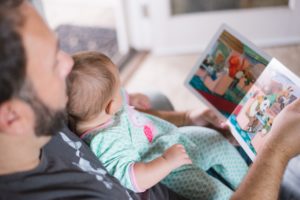Reading Books with Kids!
Help your child learn through books!

As the weather gets colder, snuggling up with your little one and reading a book is the perfect way to spend some quality time together.
But how can you get the most out of your book reading experience to help your child learn?
Think about your book choice
First, you can select a book to target the speech and language goals specific to your child. For example, if your little one is having difficulty with female pronouns (she, her and hers) then a book with lots of these words, such as ‘Edwina the Emu’, will help you to provide you with the opportunity to do plenty of great modelling for these particular pronouns. The same is true for speech sounds! Listening to an accurate adult model can help children learn how to produce the sound correctly so if your little one is having trouble with their /p/ sound, a book with lots of /p/ words like ‘Too Many Pears’ would be a fantastic choice for shared reading.
Talk about the pictures
Drawing attention to the facial expressions of the characters in a book and discussing how the characters might be feeling (for example ‘I can see that she has big eyes, an open mouth and her body is tense – I think she might be feeling surprised or shocked’) is an amazing way to increase your child’s awareness of different emotional states and provide them with the language to describe their own emotions.
Once you have discussed HOW a character is feeling, a conversation about WHY they are feeling that way can be helpful to teach cause and effect.
This knowledge is important for social interaction, particularly in the playground, as children will be able to see that their actions can create different emotions in others (e.g. I gave Sam a flower and it made him feel happy).
Talk about the story
The narrative structure, or parts of the story, can often be difficult for children to determine on their own so pointing out parts of the story (such as the beginning, problem, plan, solution and ending) can be really helpful for their understanding.
Try asking your child what they would do to solve the problem of the story and don’t be afraid to offer your own suggestions too!
Asking your child questions during book reading can help them to practice their problem-solving skills in a safe environment. Keep an eye out for an infographic from Cooee on the types on questions you can ask your child while reading together!
Complete activities related to the book
Finally, the fun doesn’t have to stop when the book is finished. Playing games based on the book or helping your child to draw their favourite character from the book is a great way to help your child to express themselves while working on their motor skills.
The most important part of sharing a book together is to create a positive association with reading by having lots of fun together.
Happy reading!

Kaitie Davey
Speech Pathologist
